 |
Advanced Interpersonal Communication: Communication Styles and Methods (Instructor Guide) |
0.75 |
To be successful in the workplace, you must be able to effectively communicate and cooperate with clients and co-workers. Learning about the four types of communication styles helps a listener understand a speaker’s perspective. It also helps a speaker understand how their communication affects the listener.
In this course you will learn: to identify primary and secondary communication styles, and to communicate using various verbal and nonverbal modes of communication.
This Instructor's Edition of this course includes notes and suggestions to assist you in presenting the material, whether in an in-person classroom setting or as an instructor-led online or distance-learning course. It also provides you with the answers to questions found in mid-lesson activities, as well as in the quiz that concludes the course. |
 |
Advanced Interpersonal Communication: Communication Styles and Methods |
0.75 |
To be successful in the workplace, you must be able to effectively communicate and cooperate with clients and co-workers. Learning about the four types of communication styles helps a listener understand a speaker’s perspective. It also helps a speaker understand how their communication affects the listener.
In this course you will learn: to identify primary and secondary communication styles, and to communicate using various verbal and nonverbal modes of communication. |
 |
Advanced Interpersonal Communication: Colleagues and Subordinates (Instructor Guide) |
0.50 |
Colleagues might include people in your office, team, department, or division. They do not hold a supervisory position over you, nor do you hold a supervisory position over them. Instead, you are all in a similar place on the corporate ladder. Learning how to communicate effectively with your colleagues helps maintain a friendly and effective workplace, and enables you to better promote your ideas and respond to those of others.
In this course you will learn: to identify the guidelines for communicating with colleagues, and how to take appropriate steps to apologize to subordinates; use appropriate tactics to refuse a subordinate’s request; and dismiss a subordinate.
This Instructor's Edition of this course includes notes and suggestions to assist you in presenting the material, whether in an in-person classroom setting or as an instructor-led online or distance-learning course. It also provides you with the answers to questions found in mid-lesson activities, as well as in the quiz that concludes the course. |
 |
Advanced Interpersonal Communication: Colleagues and Subordinates |
0.50 |
Colleagues might include people in your office, team, department, or division. They do not hold a supervisory position over you, nor do you hold a supervisory position over them. Instead, you are all in a similar place on the corporate ladder. Learning how to communicate effectively with your colleagues helps maintain a friendly and effective workplace, and enables you to better promote your ideas and respond to those of others.
In this course you will learn: to identify the guidelines for communicating with colleagues, and how to take appropriate steps to apologize to subordinates; use appropriate tactics to refuse a subordinate’s request; and dismiss a subordinate. |
 |
Advanced Interpersonal Communication: Building Relationships Through Feedback (Instructor Guide) |
0.75 |
Providing feedback is an important element in building a relationship because it closes the circle of communication that links the listener and speaker. Until feedback is given, the people involved in communication are either speakers or listeners. Once a speaker receives feedback, the roles switch, and both parties are equally involved in a conversation.
In this course you will learn to use paraphrasing effectively, and provide positive and constructive feedback in a business setting.
This Instructor's Edition of this course includes notes and suggestions to assist you in presenting the material, whether in an in-person classroom setting or as an instructor-led online or distance-learning course. It also provides you with the answers to questions found in mid-lesson activities, as well as in the quiz that concludes the course. |
 |
Advanced Interpersonal Communication: Building Relationships Through Feedback |
0.75 |
Providing feedback is an important element in building a relationship because it closes the circle of communication that links the listener and speaker. Until feedback is given, the people involved in communication are either speakers or listeners. Once a speaker receives feedback, the roles switch, and both parties are equally involved in a conversation.
In this course you will learn to use paraphrasing effectively, and provide positive and constructive feedback in a business setting. |
 |
Advanced Assessment for Teachers: Foundations |
1.75 |
This course covers the foundations of assessment information for teachers. It is a refresher for basic concepts generally covered in a teacher preparation program. Teachers must be mindful of the reasons for assessment and its importance in supporting appropriately designed instruction for students. This course will help you develop new knowledge and review prior knowledge regarding the impact of assessment on teaching and learning. It is just one of many K-12 Education courses we offer. |
 |
Advanced Assessment for Teachers: Application |
1.50 |
This course delves into various aspects of assessment applications for teachers. It offers an overview of fundamental concepts while incorporating the latest advancements in assessment techniques. Assessment plays a pivotal role in well-crafted educational strategies for students. This course will enhance your understanding of new and existing insights into how assessment influences the teaching and learning process. This is just one of the many K-12 Education courses we offer. |
 |
Adult and Child CPR (Corrections) |
2.00 |
In this course, you will learn how to properly perform Adult and Child CPR that may someday enable you to save someone's life. |
 |
Adult and Child CPR |
2.00 |
In this course, you will learn how to properly perform Adult and Child CPR that may someday enable you to save someone's life. |
 |
ADHD (CDA 8) |
2.00 |
In a 2015 survey, one half of children in preschool were on medication for Attention Deficit Hyperactivity Disorder (ADHD). People with ADHD tend to be visionaries, dreamers, explorers, inventors, and trend setters. In this course, we will explore ADHD as a disorder that can negatively affect a child’s life, and as a trait that may be beneficial in helping a child grow into a successful adult. This course is designed to be part of a Child Development Associate (CDA) Credential™ curriculum and covers CDA Subject Area 8, Understanding Principles of Child Development and Learning. This course can also be taken as a stand-alone learning event or as part of a broader early childhood education curriculum. |
 |
Adaptive Radiation and Evolution: A Case Study using Hawaiian Forest Birds |
1.00 |
Hawaiian forest birds, specifically Hawaiian Honeycreepers, are an excellent example of evolution by adaptive radiation due to their close relationships, but diversity in morphology and behavior. The factors involved in the biological concept of evolution will be discussed, with adaptive radiation as a particular mechanism, and how this is evident in certain features of Hawaiian Honeycreepers. |
 |
Adapting to Change |
0.50 |
Change is always happening, whether we realize it or not. Our bodies are constantly generating new cells to replace old ones. Stock prices are rising and falling. In this course, you will discover different strategies for reacting to and dealing with change in life. |
 |
Adaptarse al Cambio (Spanish) Adapting to Change |
0.25 |
El cambio siempre está ocurriendo, nos demos cuenta o no. Nuestros cuerpos generan constantemente nuevas células para reemplazar las viejas. Los precios de las acciones suben y bajan. En este curso, descubrirá diferentes estrategias para reaccionar y afrontar los cambios en la vida.
Change is always happening, whether we realize it or not. Our bodies are constantly generating new cells to replace old ones. Stock prices are rising and falling. In this course, you will discover different strategies for reacting to and dealing with change in life. |
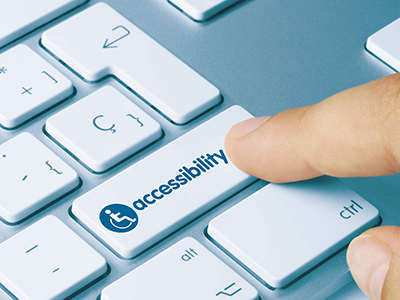 |
Accessible Instructional Materials (AIM) |
1.00 |
Many students with disabilities have difficulty with standard materials, seeing them, manipulating them, or decoding or comprehending them. These students need accessible instructional materials (AIM) in order to access the general education curriculum.
This course is all about accessible instructional materials. This course will help you develop new knowledge about students and will help you understand your role in assisting students that need to use these materials. |
 |
Accessibility |
0.50 |
This course covers disability etiquette in the workplace and legal requirements, in addition to accommodations for employees and patrons with disabilities. Interacting with people with disabilities is based on a knowledgeable and evolving foundation with room for growth. Employees in the workplace and people with disabilities who enter these workplaces will feel more welcome and included the more this foundation is relied upon. |
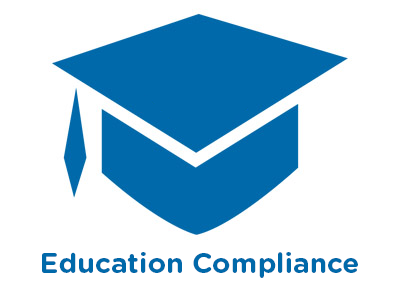 |
A Student Guide to Title IX |
0.50 |
Title IX is a federal civil rights law that prohibits sexual discrimination in educational institutions that receive federal funding. Under Title IX, discrimination on the basis of sex can include sexual harassment or sexual violence, such as rape, sexual assault, sexual battery, and sexual coercion. This course helps students to identify their rights under Title IX, and describe their school’s responsibilities under the law. |
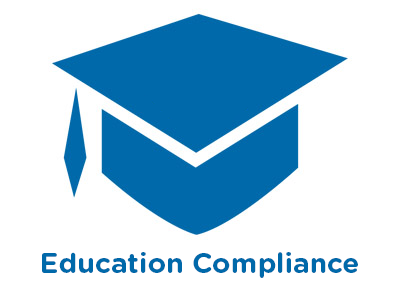 |
A Student Guide to the Clery Act |
0.50 |
The Jeanne Clery Disclosure of Campus Security Policy and Campus Crime Statistics Act, commonly known as the Clery Act, is a federal law that requires colleges and universities to track and disclose information about crimes that occur on or near campus. This course is designed to help students understand how the Clery Act impacts them and their school. |
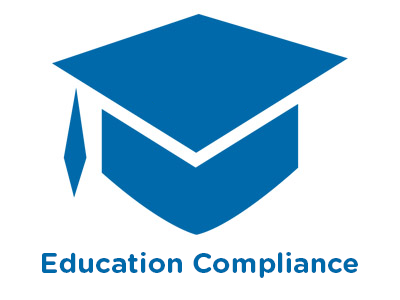 |
A Student Guide to Sexual Violence Prevention and Response |
0.50 |
This course will help students understand what they can do to prevent sexual violence, as well as how they can respond to survivors of sexual violence. Students will also examine the definition of bystander intervention, as well as explore how to define and identify consent.
|
 |
A Student Guide to Sexual Violence and the Law |
0.50 |
According to the US Department of Justice, an average of one in four undergraduate women experience sexual assault by the time they finish college. A series of federal laws empower colleges and universities to take action against sexual violence on campus. This course offers students a brief look at the Title IX, the Clery Act, the Violence Against Women Act, and the Campus Violence Elimination Act.
|
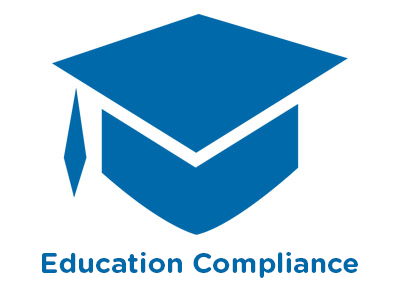 |
A Student Guide to Implicit Bias |
1.00 |
Implicit biases are the unconscious attitudes, reactions, and stereotypes that affect our understanding, actions, and decisions. In this course, students will explore the implicit biases that happen despite their best intentions. They will learn how implicit bias can impact the classroom and the workplace, and identify steps they can take to learn more about their own implicit biases. |
 |
A Student Guide to Hazing |
0.50 |
Hazing happens in sports, in Greek life, in honor societies, and in marching bands. Over half of all college students involved in sports, clubs, and other organizations experience hazing. Both male and females students report a high level of hazing, and two out of five students say they know hazing happens on their campus. This course is designed to help students quickly recognize and effectively respond to hazing. |
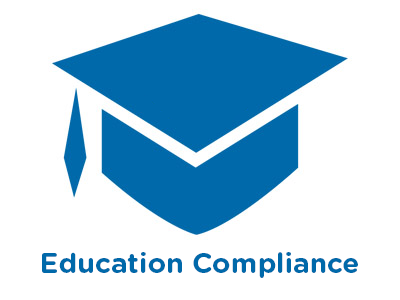 |
A Student Guide to Fire Safety |
0.50 |
Between January 2000 and May 2015, 85 fatal fires in dorms, fraternities, sororities, and off-campus housing took the lives of 118 people. This course offers students a refresher about fire safety, including the main causes of campus fires, the actions students can take to prevent fires, and the importance of working smoke alarms and knowing two ways out.
|
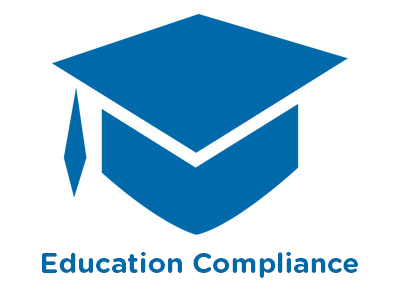 |
A Student Guide to Drug and Alcohol Abuse |
0.50 |
College students rank high among people who abuse drugs and alcohol on a regular basis. Students turn to drugs and alcohol for many reasons: they are on their own for the first time, and want to experiment; they are surrounded by others who drink or do drugs; they are stressed, and think it will help them to cope. In this course, students will define abuse, recognize the signs of abuse, define binge drinking and its risks, and identify sources of support.
|
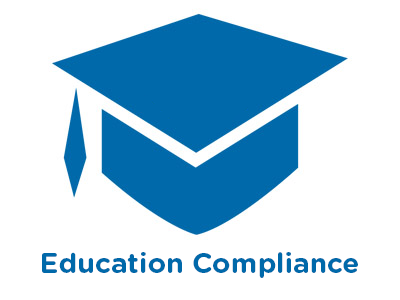 |
A Student Guide to Cultural Diversity |
0.50 |
For many of students, campus life offers the first real taste of freedom and independence. It also offers a first unfiltered view of the world, as they encounter students, faculty, and staff from other parts of the country and around the globe. Cultural diversity enriches the college experience, provides opportunities to learn and grow, and lays a foundation for the skills students need to thrive in today’s global and multicultural world. But it can also be confusing to navigate. That’s what this course is all about. |


























